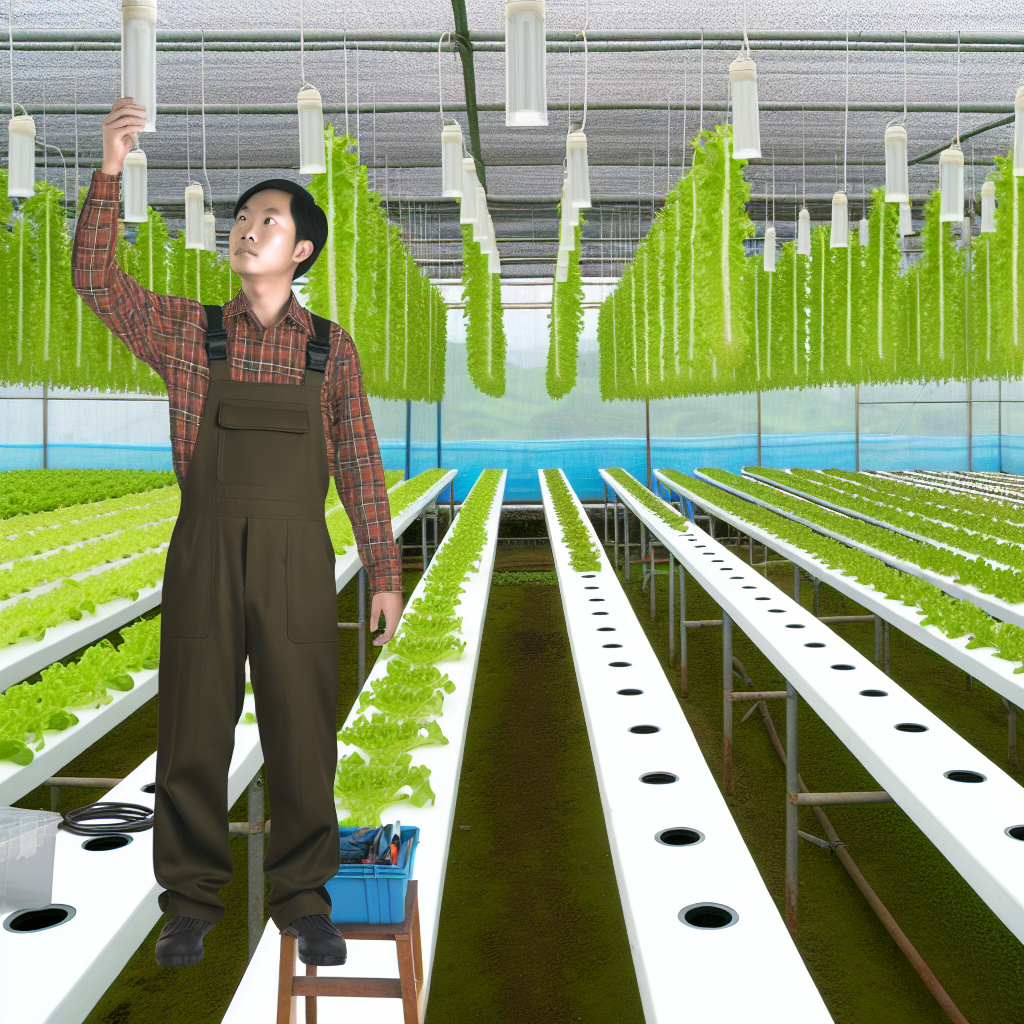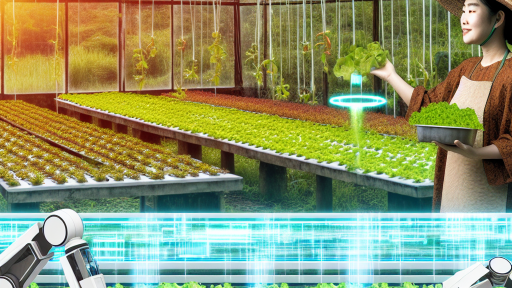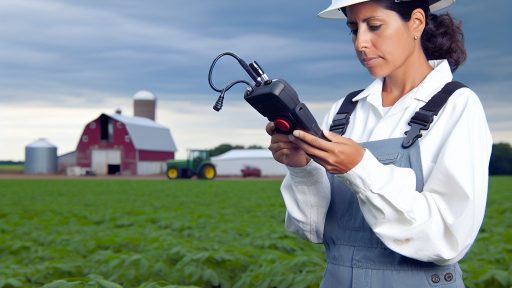Introduction to Hydroponic Systems and Their Energy Usage
Understanding Hydroponic Systems
Hydroponic systems grow plants without soil.
Instead, these systems use nutrient-rich water solutions.
This method allows for controlled growing environments.
As a result, plants can grow faster and healthier.
Additionally, it uses less water than traditional farming.
Types of Hydroponic Systems
Various hydroponic systems exist, each with unique features.
For instance, nutrient film technique (NFT) circulates a thin film of nutrient solution.
In contrast, deep water culture (DWC) suspends plant roots in oxygenated nutrient solution.
Other types include aeroponics and drip systems.
Each system has different energy requirements.
Energy Usage in Hydroponic Systems
Energy consumption is a key consideration in hydroponics.
Hydroponic systems often rely on artificial lighting.
This is especially true in indoor environments.
Moreover, pumps may require significant energy to circulate water.
Temperature control systems also contribute to energy usage.
Transform Your Agribusiness
Unlock your farm's potential with expert advice tailored to your needs. Get actionable steps that drive real results.
Get StartedFactors Influencing Energy Consumption
Several factors influence the amount of energy hydroponic systems use.
- The type of lighting impacts energy needs significantly.
- System design determines the efficiency of water circulation.
- Climate control methods play a critical role as well.
Optimizing these factors can lead to energy savings.
For example, using energy-efficient LED lights can reduce costs.
Importance of Energy Efficiency
Energy efficiency is crucial for sustainable hydroponic farming.
Reducing energy consumption lowers operating costs.
It also lessens the environmental impact.
As more consumers demand eco-friendly products, efficiency becomes vital.
Strategies for Improving Energy Efficiency
Several strategies exist to enhance energy efficiency in hydroponic systems.
- Implementing a smart control system optimizes resource usage.
- Using renewable energy sources mitigates reliance on the grid.
- Conducting regular maintenance maximizes system efficiency.
By adopting these strategies, growers can enhance their operations.
Importance of Energy Efficiency in Hydroponics
Maximizing Resource Utilization
Energy efficiency is crucial in hydroponic systems.
By optimizing energy use, growers can reduce operational costs significantly.
This efficiency leads to better use of resources.
Moreover, it enhances overall system productivity.
Reducing Environmental Impact
Hydroponics is a water-efficient farming method.
However, energy consumption can be high without proper efficiency measures.
Implementing energy-efficient practices minimizes carbon footprints.
This is essential in combating climate change.
Lowering Operational Costs
Reducing energy consumption directly lowers bills.
Growers can reinvest the savings into improving their systems.
Consequently, enhanced profitability becomes achievable.
Increasing System Reliability
Efficient systems tend to be more reliable.
This reliability helps prevent system failures and downtime.
Thus, growers can maintain consistent production levels.
Supporting Technological Innovations
Investing in energy efficiency encourages innovation in hydroponic technology.
Showcase Your Farming Business
Publish your professional farming services profile on our blog for a one-time fee of $200 and reach a dedicated audience of farmers and agribusiness owners.
Publish Your ProfileNew technologies often emerge to support sustainable practices.
These advancements improve plant growth and yields overall.
Types of Energy-efficient Hydroponic Systems
Deep Water Culture Systems
Deep water culture systems offer high efficiency in energy use.
These systems keep plants suspended in nutrient-rich water.
They utilize air stones for oxygen delivery to the roots.
Consequently, energy consumption for oxygenation is minimal.
Nutrient Film Technique
Nutrient film technique (NFT) recycles nutrient solutions effectively.
This system uses a thin film of nutrients for plant roots.
Because of the flow design, less energy is required for pumping.
This method ensures constant nutrient availability and efficiency.
Vertical Hydroponic Systems
Vertical hydroponic systems maximize space while saving energy.
They use stacked layers to grow plants vertically.
As a result, light and nutrients are more effectively distributed.
Thus, these systems enable optimal use of limited resources.
Aeroponic Systems
Aeroponic systems spray nutrients onto plant roots suspended in air.
This method dramatically reduces the amount of water needed.
Energy consumption is minimized by using fine mist spray systems.
Such efficiency allows for faster plant growth and resource conservation.
Solar-Powered Hydroponics
Solar-powered hydroponic systems utilize renewable energy sources.
They harness solar panels to generate energy for operations.
This approach decreases reliance on grid electricity.
Furthermore, it significantly lowers operational costs over time.
LED Grow Light Integration
LED grow lights enhance energy efficiency in hydroponic systems.
These lights consume less power while providing optimal spectrum.
Additionally, LED lights emit less heat, reducing cooling needs.
Ultimately, this results in lower energy bills for growers.
Learn More: Monitoring Crop Health Through Disease Forecasting
Solar Energy Integration in Hydroponic Farming
Benefits of Solar Energy
Solar energy provides an efficient power source for hydroponic systems.
It reduces reliance on non-renewable resources.
Moreover, it lowers operating costs significantly.
Additionally, solar energy enhances sustainability practices.
Implementation Strategies
Integrating solar panels into hydroponic facilities involves careful planning.
First, assess the available space for solar installations.
Next, calculate the energy needs of your hydroponic system.
This ensures optimal panel placement and efficiency.
Case Studies of Successful Integration
Several farms showcase successful solar integration in hydroponics.
Agritech Solutions in California uses solar panels effectively.
This reduces energy costs while enhancing crop yields.
GreenTech Farms in Florida also highlights this model.
They maintain environmental sustainability with reduced carbon footprints.
Showcase Your Farming Business
Publish your professional farming services profile on our blog for a one-time fee of $200 and reach a dedicated audience of farmers and agribusiness owners.
Publish Your ProfileOvercoming Challenges
Adopting solar energy for hydroponic systems presents challenges.
Initial investment costs can be a barrier.
In addition, weather variability may affect energy generation.
However, technological advancements continue to make solar more accessible.
Future Outlook for Solar in Hydroponics
The future of solar energy in hydroponics looks promising.
Innovations in solar efficiency will enhance integration.
Furthermore, government incentives may encourage more farmers.
As a result, we anticipate a sustainable shift in farming practices.
Delve into the Subject: Essential Technologies For Modern Crop Monitoring
Using LED Lighting for Enhanced Energy Efficiency
Introduction to LED Lighting
LED lighting has revolutionized hydroponic systems.
This technology offers superior energy efficiency compared to traditional lighting.
It significantly reduces electricity consumption while providing high-quality light.
Benefits of LED Lighting
LED lights produce less heat, keeping plants in optimal conditions.
Lower heat output allows for closer placement to plants.
This proximity maximizes light absorption and enhances growth rates.
Moreover, LEDs have a longer lifespan than conventional bulbs.
Less frequent replacements lead to lower maintenance costs.
Types of LED Lights for Hydroponics
Various LED lights are suitable for hydroponic setups.
- Full-spectrum LEDs mimic natural sunlight.
- Cob LEDs offer high intensity and efficiency.
- Strip lights provide flexibility for custom setups.
Selecting the right type influences plant growth and energy savings.
Energy Savings and Cost Efficiency
Implementing LED technology drastically cuts energy expenses.
Hydroponic systems benefit from using energy-efficient light sources.
Notably, some growers report up to 80% savings on lighting costs.
In addition, the reduced energy demand lowers carbon footprints.
Optimizing LED Usage in Hydroponics
To maximize efficiency, position LEDs appropriately in the grow area.
Adjust light cycles based on plant needs and growth stages.
Monitor energy usage to identify patterns and opportunities for optimization.
Real-Life Examples of LED Success
Many hydroponic farms have successfully adopted LED lighting.
For instance, GreenGrow Farms increased yields by 30% after switching to LEDs.
Likewise, Urban Harvest reported a significant decrease in energy costs.
The Future of LED Technology in Hydroponics
Advancements in LED technology promise even greater energy efficiency.
Researchers are investigating new materials and designs for future LEDs.
These innovations will continue to enhance hydroponic farming practices.
Discover More: Effective Cover Crop Management Techniques

Best Practices for Water and Nutrient Management in Hydroponics
Optimizing Water Usage
Efficient water management is crucial in hydroponic systems.
Start by using recirculating systems to minimize waste.
Regularly monitor the water quality to prevent nutrient imbalances.
Consider implementing a timer for irrigation to control water delivery.
Ultimately, use sensors to detect moisture levels in the growing medium.
Understanding Nutrient Solutions
Nutrient solutions should be tailored to plant needs.
Research specific nutrient requirements for different crops.
Showcase Your Farming Business
Publish your professional farming services profile on our blog for a one-time fee of $200 and reach a dedicated audience of farmers and agribusiness owners.
Publish Your ProfileFollow guidelines for nutrient mixing, ensuring proper ratios.
Moreover, it is vital to maintain pH levels within optimal ranges.
Regularly test the nutrient solution for consistency and effectiveness.
Emphasizing System Maintenance
Consistent maintenance keeps the system running efficiently.
Clean reservoirs and components to prevent algae growth.
Replace worn out components promptly to avoid disruptions.
Schedule routine inspections to identify potential issues early.
Additionally, document maintenance activities for accountability.
Utilizing Technology
Technology can enhance water and nutrient management practices.
Consider using automated systems for nutrient delivery.
Employ software solutions to track water usage and nutrient levels.
Furthermore, integrate data analytics to optimize resource allocation.
These tools help identify trends and improve future outcomes.
Employee Training and Awareness
Training staff on best practices improves overall efficiency.
Provide regular workshops on water and nutrient management.
Encourage sharing of experiences and solutions among team members.
Furthermore, maintain updated manuals for reference.
By fostering a culture of awareness, better outcomes are achievable.
Delve into the Subject: Automated Crop Monitoring Systems For Farmers
Technological Innovations Driving Energy Efficiency
Smart Growing Technologies
Smart growing technologies revolutionize hydroponic systems.
Automated monitoring systems optimize nutrient and water usage.
These advancements minimize waste and maximize yields.
Furthermore, IoT sensors can track plant health in real-time.
With accurate data, growers can make informed decisions.
Energy-Efficient Lighting Solutions
LED lighting has transformed indoor farming.
These lights consume less energy than traditional bulbs.
Additionally, LEDs provide the specific light spectrum plants need.
This improves growth rates and reduces electricity costs.
For instance, companies like GreenLight Technologies offer customizable LED systems.
Advanced Hydroponic Systems
Innovative hydroponic systems improve water and nutrient efficiency.
Aeroponic systems mist the roots for optimal nutrient delivery.
Similarly, vertical farming maximizes space and resource use.
These methods significantly decrease energy consumption.
As a result, producers can grow more while using less.
Renewable Energy Integration
Integrating renewable energy sources boosts sustainability.
Solar panels provide clean energy for hydroponic farms.
Wind turbines can also power operations in suitable locations.
This reduces reliance on fossil fuels and lowers operational costs.
Moreover, initiatives like EcoGrow demonstrate successful implementation.
Data-Driven Farming Practices
Data analytics plays a crucial role in energy efficiency.
Showcase Your Farming Business
Publish your professional farming services profile on our blog for a one-time fee of $200 and reach a dedicated audience of farmers and agribusiness owners.
Publish Your ProfileBy analyzing trends, farmers can optimize their processes.
Predictive maintenance for equipment prevents energy waste.
A tool like FarmIQ streamlines these operations effectively.
Consequently, growers can enhance productivity and sustainability.
Case Studies of Energy-efficient Hydroponic Farms
Innovative Solutions at GreenLeaf Farms
GreenLeaf Farms implemented LED lighting to enhance energy efficiency.
This change reduced their energy costs by 30% annually.
Additionally, they utilized a rainwater harvesting system for irrigation.
This system minimized water waste and maximized resource efficiency.
The farm also installed smart sensors to monitor climate conditions.
These sensors helped in optimizing energy consumption in real-time.
EcoGrow Systems and Renewable Energy
EcoGrow Systems harnessed solar panels to power their hydroponic operations.
Through solar energy, they achieved a 50% decrease in electricity usage.
They also created a closed-loop water system.
This innovative design reduced water consumption by 60%.
With these methods, EcoGrow Systems promoted sustainable practices in agriculture.
Urban Harvest’s Vertical Farming Approach
Urban Harvest adopted vertical farming to enhance space efficiency.
This strategy utilized stacked layers of crops, maximizing yield per square foot.
They integrated energy-efficient equipment throughout their operations.
This equipment included energy-saving pumps and automated growing systems.
As a result, Urban Harvest significantly cut down on energy waste.
Sustaining Community Efforts with Harvest Together
Harvest Together focused on community engagement and local sourcing.
They partnered with local farmers to reduce transportation emissions.
The farm also implemented biofiltration systems for air purification.
These systems improved air quality while being energy-efficient.
Consequently, they became a model for sustainable urban agriculture.
Additional Resources
Trends, Insights, and Future Prospects for Production in Controlled …
Going Green with Hydroponics: 6 Environmental Benefits of Water …




